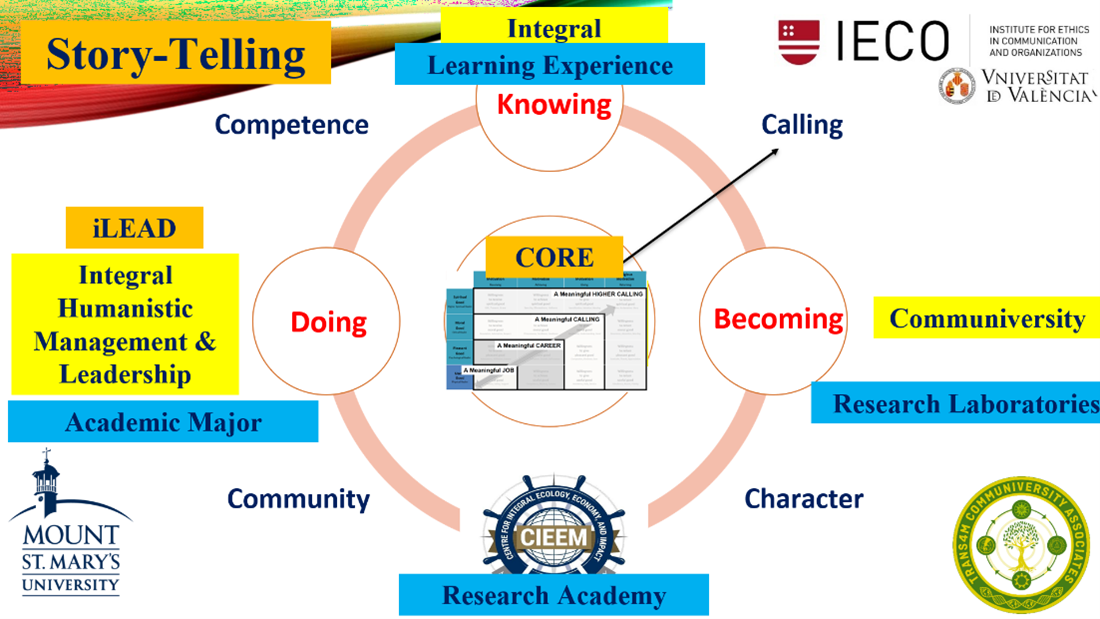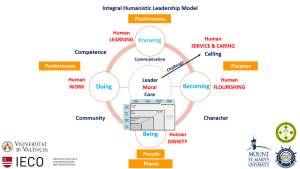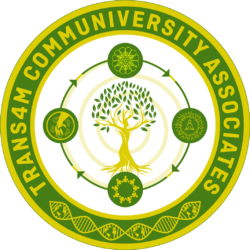
- Home
- An Integral Humanistic Model for Business Storytelling
- admin
- 0 Comments
- September 14, 2022

How do we tell the business story?
Prof Alejandro Cañadas
There are many stories of profit and non-profit organizations out there. How do we disentangle the good ones from the bad ones? For some people, the stories of Arthur Andersen, Enron, Parmalat, and Berni Madoff were great stories of money-making, success, and power until they lasted.
Which criteria do we use to decide whether Business stories are good or bad? The Moral Core:
We need a practical analysis framework that considers the role of an organization and its impact. An organization (non-profit) or a business firm (for-profit) is, first of all, a human reality. It is formed by people, led by people, employs people, serves people, and has a real impact on people.
Management is about people dealing and dealing with people requires ethics because good or bad impacts every time we make human decisions in business.
The manager’s decisions and actions are human decisions that will serve or damage people, including the manager themselves. Thus, ethics is not an artificial add-on to management; it is an intrinsic dimension of good leadership. Therefore, we need a practical analysis framework that considers the existence of a solid moral core as the criteria to qualify our human decisions in any organization. A solid moral core is not only to avoid bad human interaction but is much more than that. It promotes the good, the truth, and the beauty of human actions, decisions, and human interactions in organizations.
If we cannot see that we are communicating with others, we will not realize what we do to ourselves, others, and the Earth. Ecological degradation, racism, discrimination, hatred, and lack of interest in working for justice, truth, and love reflect our lack of respect for humanity and the imbalances and disequilibrium we create in our systems. We need to organize a Humanistic Management & Leadership program based on systems thinking that works toward integral wholeness by developing the scope and depth of the transformational moral core that drives integral impact and sustainability.
Humanistic Management: Being
We need a practical analysis framework that considers the person’s centrality in management in her particular context. Because management is about human beings. Reflecting on “What does it mean to be human?” is a necessary process to highlight the capacities of our human nature and to clearly describe what shapes our being: our local community, sources of life, and relationships.
The person encompasses dignity and worthiness, which emphasizes that human beings are endowed with an absolute value that deserves total respect. Things have a price, but people have dignity.
A clear sense of purpose and meaning: Becoming
We need a practical analysis framework that considers our realm of inspiration that gives us purpose and meaning to become better human beings in what we do, shaping our culture and integrating our spiritual world.
All over the World, throughout all disciplines and fields, in theory, and practice, there are more and more voices demanding integrated, holistic, whole-systems perspectives to solve the problems of humanistic disintegration that we observe today. Indeed, many highly respectable integral approaches have helped shift our global perspective toward a more critical viewpoint over the last 200 years. Today more than ever, we realize that most of our problems come from our incapacity to see things in systems and to create the ability to change accordingly. As Mahatma Gandhi said: “One man cannot do right in one department of life while he is occupied in doing wrong in any other department. Life is one indivisible whole” (14) (p. xxx).
Reframing Integral Knowledge: Knowing
We need a practical analysis framework that considers our realm of knowledge creation, integrating our sciences and technology into integrated, holistic, whole-systems perspectives realities.
From biological sciences, we know that life is not simply a genetically determined program but is a subject of information, encounter, and communication systems nested in larger complex systems.
Reframing Integral Action with Integral Impact: Doing
We need a practical analysis framework that considers our realm of action that rebuilds infrastructures and institutions via sustainable enterprise and economics.
Pope Francis invites us to make an integral impact that he calls the: “Economy of Francesco” (EoF). In “Laudato Si,” Pope Francis shows us the reality of growing economic inequalities and social and environmental degradation. The Pope shows us an intimate relationship between the poor and the planet’s fragility, our moral behaviour (even our sins), and ecological degradation. The truth is that everything in the world is interconnected. In “Laudato Si,” Pope Francis moves our hearts to have an integral, spiritual, sustainable, and ecological conversion.
After the catastrophic global financial crisis in 2009, in a post-COVID era, this is the ideal time for a great reset in how we practice, live, and teach business, management, and economics. We need inspiring business stories. Many leaders and organizations have already started new integral, sustainable, and ecological journeys.
We need an integral framework: a plan of understanding and action: 4-Worlds model
We can use the integral framework developed by Ronnie Lessem and Alexander Schieffer (1974, 2001, 2009, 2010, 2014, 2019). They have been working on identifying Integral Models for more than 40 years in different parts of the world. They implement a 4-Worlds model integrating nature and community (in the south), cultural and spiritual dimensions (in the east), science and technology (in the north), and economics, finance, and enterprise (in the west) to form a practical integral, sustainable, and ecological framework that can be used as a road map for organizational storytelling.

I adapted Lessem and Schieffer’s (2010, 2014) 4-Worlds Model with Guillén’s Motivation in Organizations: Searching for a Meaningful Work-Life Balance.
We can start telling organizational stories by using these five questions to use to tell the story of any profit or non-profit organization or community:
- Which is the core on which you build your moral and spiritual foundations? [This is our Core]
- Where are you coming from? (Place, family traditions, culture) [This is our source of Being]
- Why are you in business? Which is your source of Purpose & Meaning in Business? [This is our source of Becoming]
- Which areas of expertise that you have? [This is our source of Knowing]
- Which are the unique characteristics of your business? [This is our source of Doing]


Leave a Comment